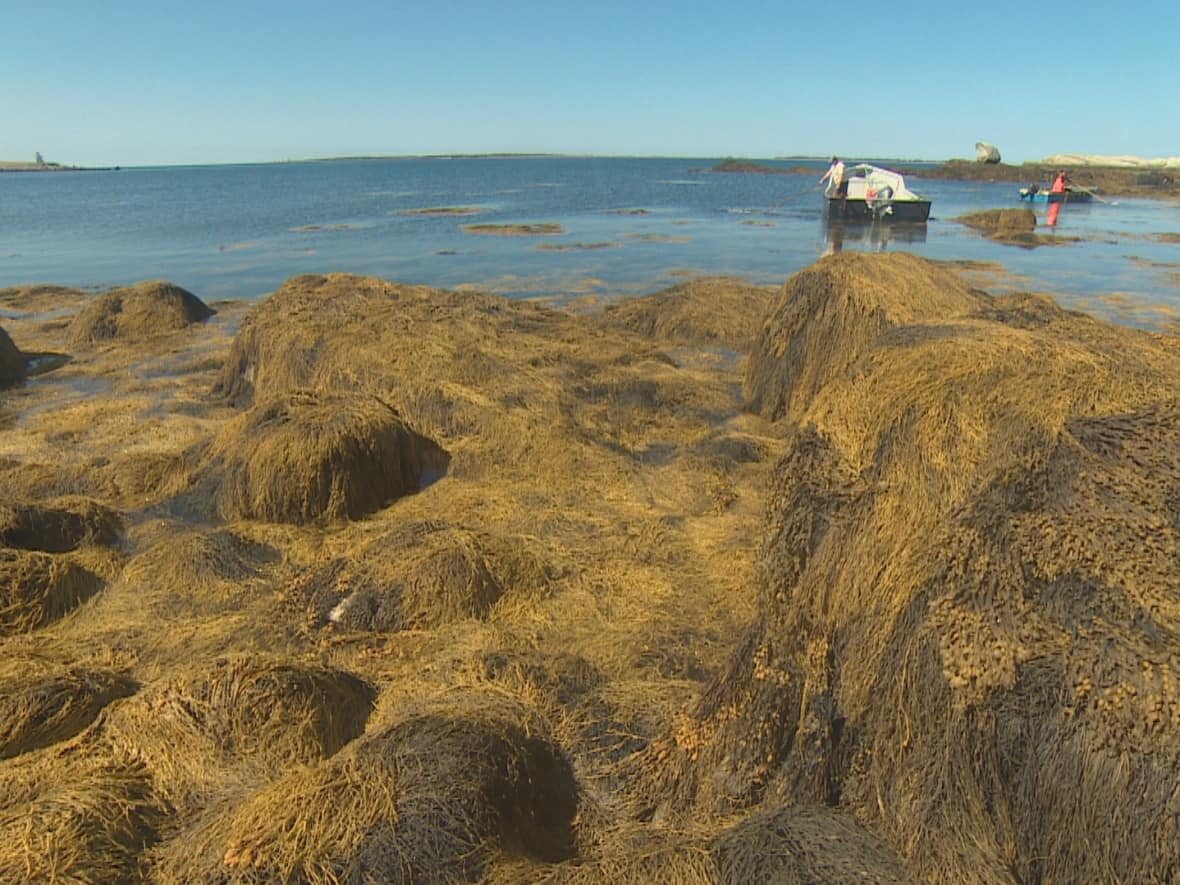How Atlantic Canada's warming ocean could impact everything from seaweed to lobster

Our planet is changing. So is our journalism. This story is part of a CBC News initiative entitled "Our Changing Planet" to show and explain the effects of climate change. Keep up with the latest news on our Climate and Environment page.
An Atlantic Canadian biotechnology seafood company says it's seeing the effects of warming ocean temperatures as levels of the cold-water seaweed it harvests have plunged in one area.
Acadian Seaplants converts the seaweed Ascophyllum nodosum into ingredients used in many food, household and fertilizer products.
But the southern range of Ascophyllum in Massachusetts is now far less productive than it used to be, according to Acadian Seaplants CEO J.P. Deveau.
"The warming water is having an impact down there," Deveau said this week during a break at an Ocean Frontier Institute conference in Halifax.
"The question that we have is what's going to happen here in the future in Atlantic Canada? Will our Ascophyllum stocks be impacted? And certainly it is of big concern from our point of view."
Deveau was part of a panel discussing the impact of climate on fisheries, and of fisheries on the climate. He said his company is willing to work with scientists to better understand the impact of ocean warming on seaweed habitat.
What about lobster?
Warming temperatures have so far not impacted lobster landings in the Maritimes.
John Risley, founder of Clearwater Seafoods, predicted that will change. Risley and Clearwater co-founders sold the large vertically integrated company in 2021.
"If I was going to look at my crystal ball, I would say that the future of the lobster industry in Atlantic Canada is probably more in Newfoundland. Why? Just simply because as climate change moves through the ocean ecosystem and water warms up, species move with water temperatures," he told the conference.
Risley accused the Department of Fisheries and Oceans of not doing enough to research the impact of climate on lobster, which he called "the largest single economic component of the fishery in Atlantic Canada."
He said the amount DFO spends on lobster research is insignificant relative to the money it puts into other sectors.

DFO said it will spend $3.36 million this year on lobster science in its Maritimes region, which encompasses the Atlantic coast of Nova Scotia, southern New Brunswick and the Bay of Fundy.
The money pays salaries, including four PhD-accredited scientists, and funds projects and other surveys. DFO did not provide a comparison of science spending on other sectors.
The landed value of lobster in the Maritimes region last year was $898 million.
2019 study predicted minimal impact on lobster
In 2019, DFO attempted to predict the impact of warming waters on the lobster fishery in the Maritimes region.
It concluded that in most areas, lobster habitat offshore — defined as beyond 19 kilometres from land — is expected to remain suitable or improve over the next few decades.
The Bay of Fundy was more susceptible because it is warming at a slightly faster rate than the Scotian Shelf.
The report said the Scotian Shelf lobster fishery is somewhat insulated by location — it's in the middle of where lobsters are found on the North Atlantic coast — and water temperatures are cold enough to withstand projected temperature increases.
Northward migration tied to warming
The department has explicitly linked northward migration of fish to warming temperatures.
For the first time, in 2020, it added several warm-water fish species to the annual summer research vessel survey off the coast of Eastern Canada. It was done at the request of the commercial fishing industry, which is capturing them accidentally but cannot land them because they are not included in any Canadian commercial fish-licence conditions.
Some come in on warm water in the summer and disappear again as waters cool.
But those that are staying year-round have found conditions conducive to a full lifespan and are reproducing, including the blackbelly rosefish, a spiny finned relative of redfish. Its spawning-age population was estimated at 4,000 tonnes, the most ever.
Fisheries footprint
The conference also heard fuel consumption is the main source of greenhouse gases from the industry, but emissions are low, relatively speaking
"Most of the world's seafood systems result in much lower greenhouse gas emissions than their terrestrial livestock, egg, poultry counterpart," said Peter Tyedmers, a professor in the School for Resource and Environmental Studies at Dalhousie University.
Aquaculture is overtaking wild-capture fisheries as the source of most of the world's seafood.
Stefanie Colombo, a Canada Research Chair in aquaculture nutrition, said salmon farms are getting better at lowering their environmental footprint by reducing the amount of fish used as feed.
MORE TOP STORIES


